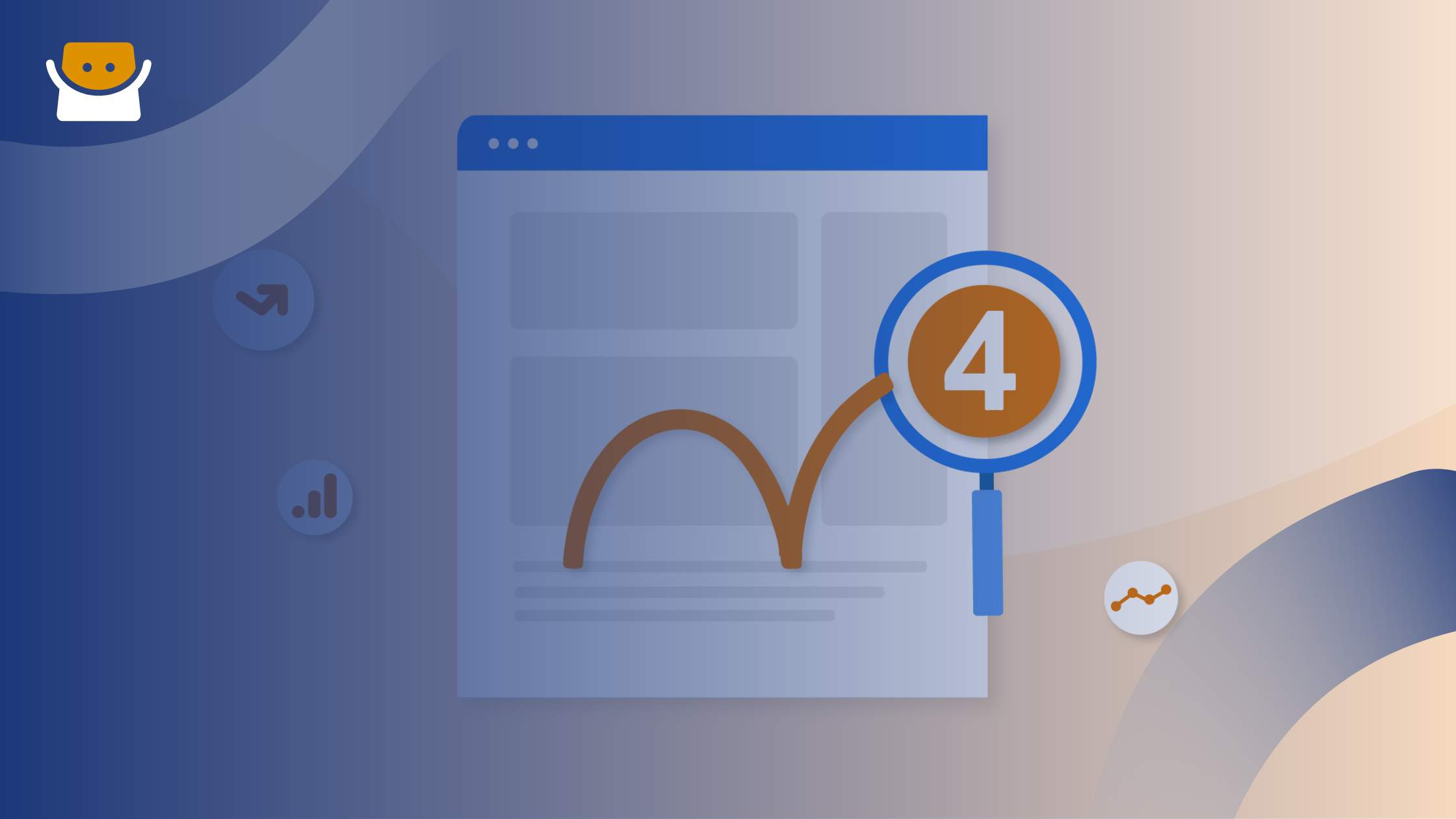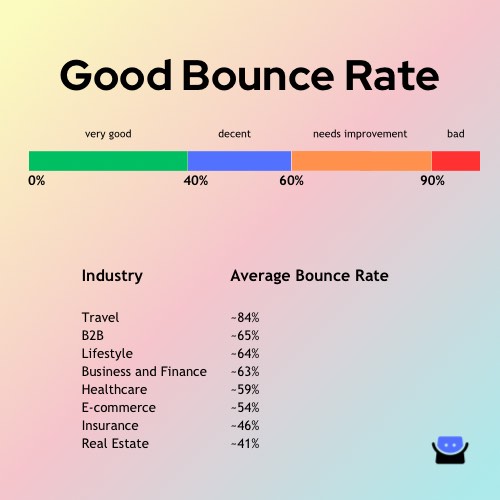January 30, 2024
What is Bounce Rate and why you should track it?

In web analytics, one metric that commands attention is the elusive “Bounce Rate.” As website owners and marketers, understanding the intricacies of this metric is crucial for refining strategies and boosting online success. In this comprehensive exploration, we’ll delve into the concepts of
- What is Bounce Rate
- Why is Bounce Rate important?
- What is a Good Bounce Rate?
- What are the factors influencing it and strategies to keep it in check?
What is Bounce Rate?
At its core, Bounce Rate represents the percentage of visitors who navigate away from a site after viewing only one page. In simpler terms, it reflects the immediate exit of users without engaging further.
As per Google Analytics 4 the definition of Bounce Rate is how engagement is measured. It is considered based on page views, session duration, and conversion events.
Why is Bounce Rate Important?
Bounce Rate may be used as a Google Ranking factor. High bounce rates may suggest that your website's content or design is uninteresting or irrelevant. Analysing your pages' bounce rate can provide you with opportunities for improvement, such as pinpointing navigation issues, slow load times, or irrelevant content.
User Experience Indicator:
A high Bounce Rate often correlates with a poor user experience. Visitors might be dissatisfied with the page content, design, or navigation, prompting a swift exit.
Content Relevance Check:
Bounce Rate acts as a litmus test for content relevance. If users leave quickly, it suggests that the content failed to meet their expectations or answer their queries.
Page Load Performance:
Slow-loading pages can contribute to high Bounce Rates. Users today expect speed, and any delay can lead to frustration and abandonment.
Conversion Implications:
For e-commerce sites, a high Bounce Rate can be particularly concerning as it may indicate missed conversion opportunities. Visitors leave without exploring products or completing desired actions.

What is a Good Bounce Rate?
While the actual number may vary from industry to industry, the average bounce rate ranges from 41% to 55%. Further as per Claspo, the average website bounce rate by industry is -
| Industry | Average Bounce Rate |
| Travel | 82.58% |
| B2B | 65.17% |
| Lifestyle | 64.26% |
| Business and Finance | 63.51% |
| E-commerce | 54.54% |
| Healthcare | 59.50% |
| Insurance | 45.96% |
| Real Estate | 40.78% |
Here are some key points to consider when thinking of a Good Bounce Rate -
- Optimal Website Bounce Rate 30 - 45% - The ideal bounce rate range websites should aim for. If your Web Analytics Tool displays this range, your website is already outperforming most of your competitors. However, achieving this benchmark is still challenging.
- The First Warning Sign is 70% or More - Visitors to your website often come to find specific information and leave once they have found it.
- If your Bounce Rate is above 90% - When your website's bounce rate goes beyond the 90% industry standard, it's a cause for concern. This may suggest that your content is of poor quality, or that your page loading speeds are too slow. It's crucial to address these issues in order to prevent a negative impact on your website's performance.
No matter the industry standard for bounce rates, there are ways to encourage your visitors to stay on your website longer.
Factors affecting Bounce Rates
Understanding the factors contributing to a high Bounce Rate is essential for targeted improvements.
- Page Load Time:
- Slow-loading pages drive users away.
- Optimise your website’s speed to keep visitors engaged.
- Relevance and Quality of Content:
- Ensure that your content aligns with user intent.
- High-quality, relevant content keeps visitors on your site.
- Mobile Responsiveness:
- With mobile users on the rise, a non-responsive site can lead to a higher Bounce Rate.
- Prioritize mobile optimization for a seamless experience.
- Clear Call-to-Action (CTA):
- Lack of a clear CTA can confuse visitors.
- Ensure that each page guides users on the desired action.
- Navigation Complexity:
- Complex navigation can frustrate users.
- Simplify the journey to encourage exploration.
Strategies to Reduce Bounce Rate:
- Optimise Page Load Speed: Compress images, leverage browser caching, and minimize unnecessary elements to enhance load times.
- Craft Compelling Content: Understand your audience’s needs and create engaging, informative, and relevant content.
- Improve Website Navigation: Simplify navigation menus, provide clear pathways, and guide users through the website seamlessly.
- Mobile Optimisation: Prioritise mobile responsiveness to cater to the growing number of mobile users.
- A/B Testing: Experiment with variations in design, content, and CTA to identify what resonates best with your audience.
Bounce Rate is a Key Web Metric for Your Online Success
In web analytics, while there are multiple key web metrics you need to track, Bounce Rate emerges as a critical metric, offering valuable insights into user behaviour and website performance. A high Bounce Rate demands attention, prompting a thorough evaluation of user experience, content relevance, and site functionality. By implementing strategic optimisations, website owners cannot only reduce Bounce Rates but also create an environment conducive to engagement, conversions, and long-term success.
Start Tracking Bounce Rates with Happy Clicks Web Analytics Tool
At Happy Clicks - our mission is to deliver simple, easy-to-understand web analytics solutions that empower businesses to make informed, data-driven decisions. Try Happy Clicks Web Analytics Tool for comprehensive insights, user-friendly analytics, and actionable data.
Tagged As
Web Analytics


